Onions, probably, is present on each garden, regardless of its size and climatic zone. This is one of the most popular and essential vegetable crops, the practice of cultivation of which has a century. Luke varieties are very much, and each gardener grows him for his goals - who is on repok, and who is in greens. But there is one variety, which differs from all his fellow literally to all: sizes, taste, odor and growing technology. The giant onion excisisy seduces with its dimensions and excellent taste, but problems arise with its breeding. In this article, you will learn how to avoid them and grow the onions are excised on the joy of home and envy neighbors.
Exbios Growing Technology
The Dutch Luca grade is excisisisted completely atypiece for the middle strip. Its main distinguishing feature is the incredibly large size of bulbs and, as a result, their severity - the average mass of the excibious community bulbs is 300-500. However, this is not all. Noteworthy is the fact that the bow is deprived of a typical bitterness, which all his relatives sin. It is sweet, juicy, tasty and does not cause tears. That is why excisisis is used for the preparation of salads and eat just like that - like apples or tomatoes. Such wonders of nature are explained by the low percentage of essential oils in the composition. The only drawback of this variety is a short-term storage time in 3-4 months. After this time, the bulbs lose their taste and begin to deteriorate.
Growing onion is not exhibited is not difficult, but it should be understood that he came to us from warmer edges, and therefore should be attempting to create the most similar conditions. The necessary agrotechnical recommendations say that the vegetative period of Luke should last 80 days, which in the conditions of the middle band with its short summer is almost unrealistic. For this reason, most experienced gardens are resorted to a seedy method, despite its laboriousness and troublescence.
Seedling onion excisive
The cultivation of the onion is excised across seedlings will require you a lot of time and attention, but only it will allow to collect a rich harvest, and the bulbs reach their maximum sizes. Seeds at seedlings need to be sowed in early March, but before they should be carefully prepared.
How to prepare seeds:
- Immerse in warm filtered water for several hours. You can add a little fresh aloe juice to the water to "wake up" seeds.
- Wrap the seeds into a wetted water or gauze or gauze and withstand 3-4 days.
- Disinfection, immersing the seeds into a solution of 1 liters of water and 1 g of mangartee temperature at 38-40С.
- Prepare planting tanks and an earthen mixture from the turf, humus and a rift cow in a ratio of 10: 9: 1. Wooden boxes, long pots or ordinary plastic cups can be used as a landing container.
- Carry the seeds to the ground, falling asleep with 1.5 cm layer of land.
- Pretty water and close the tank with a plastic film to create a greenhouse effect.
- Put boxes in the shaded place and wait 7-10 days before the first germination appears. After that, remove polyethylene and rearrange the boxes in a well-lit room (better on the windowsill on the south side).
- Weekly make feeding with complex mineral fertilizers, diluting 1 g in 2 liters of water.
Then it remains to regularly water and fertilize the seedlings, keeping the room temperature in the area of \u200b\u200b20c. Water to water the best water and once a couple of days to air the room. So it will last about 2 months, and in a couple of weeks before the seedlings of the onions are excised in the open soil boxes need to be taken on the balcony to order young plants. So when transplanting, they will receive less stress from changing the place of residence and grow stronger. At night, the boxes are better to put into the room, especially if steadily warm weather has not yet been established.
Useful advice: If the green feathers of Luke began to squeeze under their own weight, boldly cut them, leaving only 10 cm.
In the first days of May, the bow is already enough to grow and can be transplanted on the bed. Deliver the roots of about 2.5-3 cm. For cultivation, select a well-lit plot with loose, wet and well-drained soil. Acidness should be low or neutral. Do not bring the dung fertilizer immediately before planting, otherwise the consistency of the bulbs will turn out to be loose, not elastic. Make a small hole in the ground with your finger and place the seedlings in them on the proven scheme - 20x30 cm.
Seeds of exhibitsa
From the seeds of the onion are excisisheted to grow much easier than a seaside way. You can start work in early April, when there are no strong night frosts. However, and here can not do without preparatory manipulations.
How to prepare seeds:
- Since the seeds are very small, they are very easy to lose sight and gently sink, so each of them needs to be glued to a piece of napkins or toilet paper. For gluing, use a special celaser welded from 1 tsp. Starch dissolved in 150 ml of cold water. Heat the mixture to starch swelling, and a viscous creamy substance turned out. Slightly cool down and add AVA fertilizer (its advantage is that it is not washed out of the soil, which allows not to resort to additional feeding plants).
- The adolescent ClayTuster point to the unfolded strip of toilet paper at a distance of 5-7 cm.
- In each droplet, carefully immerse on the seed and leave to dry. This will take about it about a day.
- Clinite toilet paper tapes with seeds in rolls and put in plastic bags. Thus, they can be stored until the landing.
At first glance, this method may seem too wisdom and time consuming, but to be controlled with seeds glued to paper, it will be very easy and convenient. In addition, you can plant onions on the beds evenly and neatly, so that the landing in the future do not tarnish and they do not have to cut forward.
The planting of the exhibits should be carried out in the loose-processed "phytospyrin" of the soil. Drop the shallow trenches of the required length and simply put on the bottom of the paper tape with glued seeds. Pour the earth, Pour and wait for germs.
Loop Care Exbios
Loos care is exhibited simple, if you know some agrotechnical features. First, it is necessary to water the beds moderately, but regularly. Onions love moisture very much and with favorable conditions grows juicy and tasty. To prevent the too fast drying, the land can be covered with mulch from straw, moss or peat. She will help to fight weeds that should be constantly removed. Secondly, it is necessary to provide aeration of the root system, for which the soil must be exploded after each watering. If water is stated, roots and bulbs will begin to rot. Thirdly, you need to know how to deal with pests and diseases, as well as be able to identify their appearance.
Useful advice: Experienced gardens have onion beds next to carrot, since these cultures are able to fight parasites and protect each other.
During the period of intensive growth in the underground part of the plant, it may be needed by an additional feeding with phosphoric, nitrogen, potash and magnesium fertilizers. However, do not get fond of this thing so that you do not harm. Stop watering at the end of July so that the bulbs do not become too watery (this will reduce their storage time).
Diseases and pests of onions are excised
No matter how well you care about the bow, sometimes it simply cannot prevent the appearance of pests and insects of pests. How to grow onions excisisured you already know, but now we suggest find out how to protect your crop. Most often, this variety is ill rotting, which amazes Donets. It manifests itself mainly during the ripening period of the bulbs, and it is possible to know it by the fact that the Donets begins to die quickly due to intense rotting. Also, it is also possible to distinguish a whiten fungouncing. As a result, the rotting makes onions with soft, mucous membranes, and nothing remains except to throw it out. Unfortunately, if such signs are detected, you can only remove the affected bulbs so that the disease does not shift into healthy.
Another common disease is the head. It manifests itself as translucent dark ash stripes on the leaves. Such leaves need to be immediately removed, and perhaps the development of the disease will be able to stop. But the next time the same place is exhibited, it is better to plant no earlier than after 3-4 years (it is so much fungal disputes live).
Stickless nematode is a small worm that is very often attacking on bulk cultures. Calculate its presence is possible by the appearance of the breath and twisted foliage. This is explained by the fact that the bulbs are cracking and reappear, because inside them the nematode unfolds their activities. Such a plant must be immediately removed and burn so that nematodes do not move on. In order to prevent its appearance, it is necessary to observe the crop rotation, to timely silence the soil with lime or dolomite flour, as well as use only high-quality (unrelated) planting material.
With the onset of autumn, all your works will pay over more than inappropriate when you collect a rich harvest of huge bulbs. The modest seedling of Luke is exhibited for the summer will have time to turn into bulk oval rhizomes, which are comfortable to dig up with garden forks. A feature of the variety is the fact that the bulbs are not underground, but half stick out of it, so get them quite simple. After harvesting, you need to dry, tapping the tops so that it was stored longer. The storage temperature should not exceed + 5C. Remember that it is better to have time to eat onions excisishes for 3-4 months, otherwise it will deteriorate.

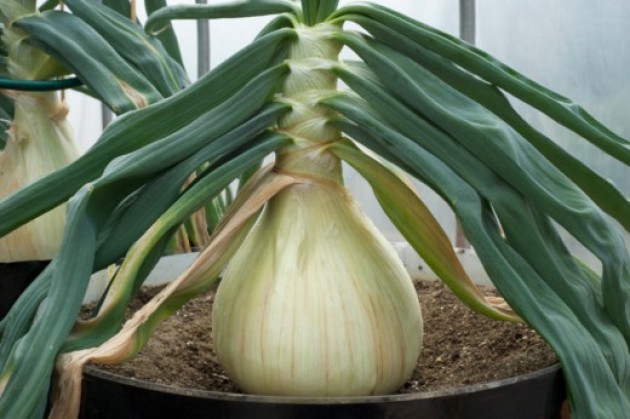
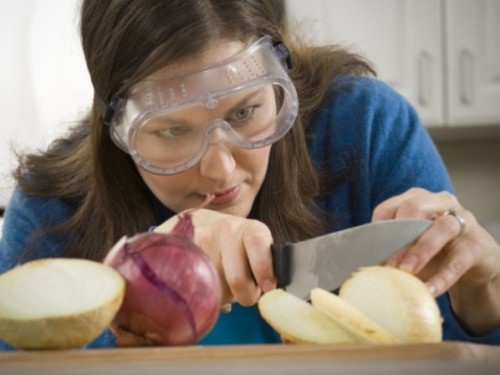
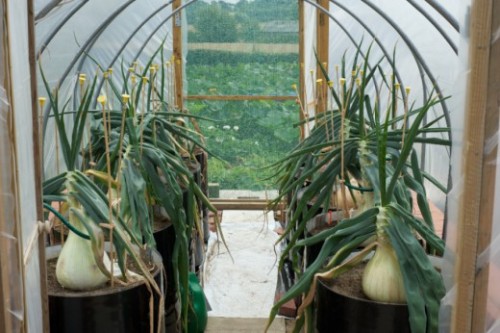
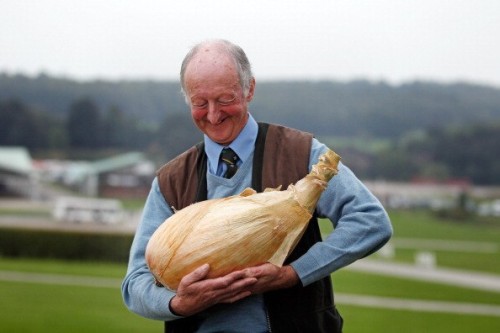
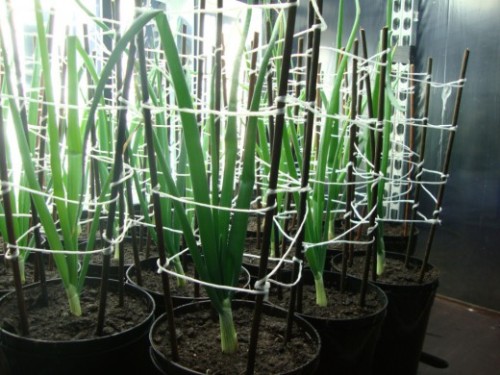
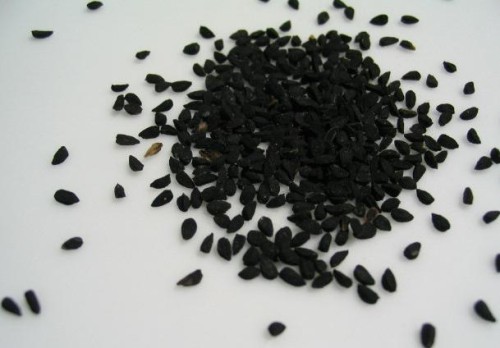
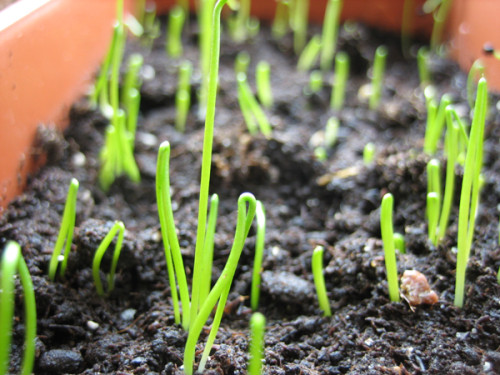

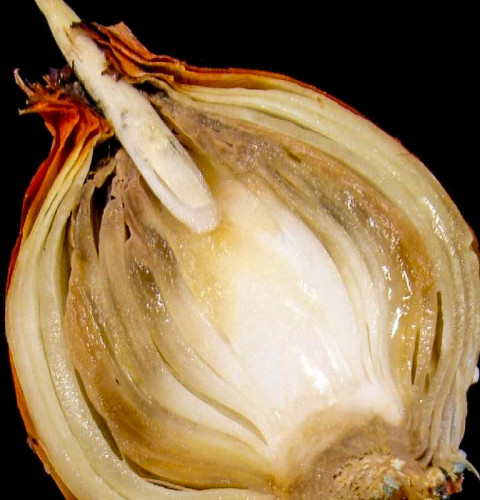
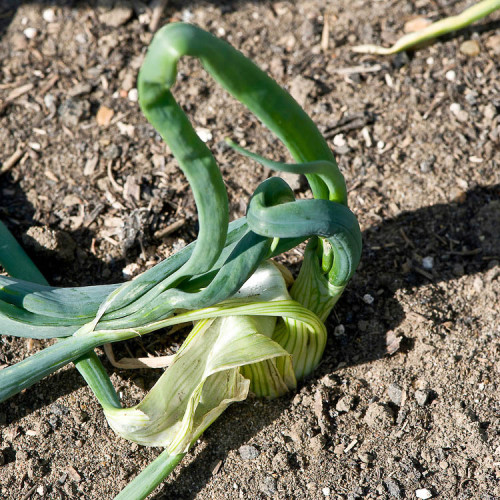
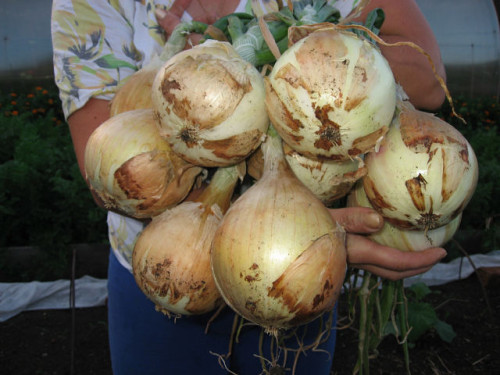












 Start a discussion ...
Start a discussion ...